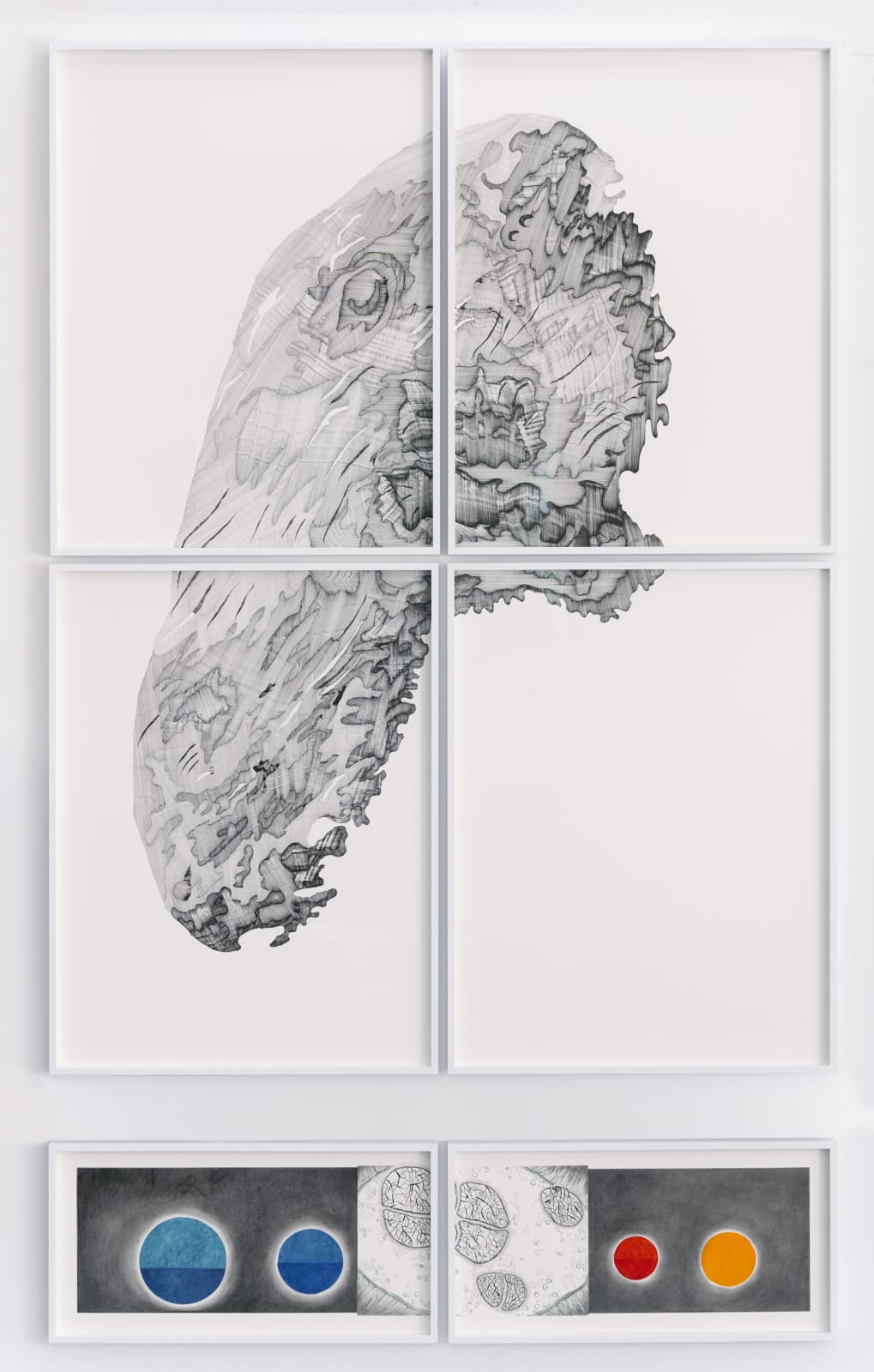-
Artworks

Amélie Bouvier
Potentially Hazardous Portraits #3, 2021Drawing ink, graphite, coloured pencil on paper (6 frames)175 x 105 cm
68 7/8 x 41 3/8 inCopyright The Artist & Harlan Levey ProjectsFar above our heads, celestial bodies barrel around our solar system, many dangerously near to Earth. Called Potentially Hazardous Objects (PHOs), these asteroids and comets have been deemed by NASA...Far above our heads, celestial bodies barrel around our solar system, many dangerously near to Earth. Called Potentially Hazardous Objects (PHOs), these asteroids and comets have been deemed by NASA and other space agencies capable of immense destruction, or even total extinction of our species, in the event of impact with our Earth. They circle us in a dizzying game of roulette that can come to an abrupt halt at any moment.
Amélie Bouvier’s series Potentially Hazardous Portraits takes its name from these asteroids. Varying greatly in scale, each drawing renders a speculative depiction of a PHO in India ink, graphite, and colored pencil. Employing her signature method of marking out the perimeters of her shapes and then using rulers and ink to build depth and volume, Bouvier maneuvers deftly between meticulously controlled line work and the ink’s unexpected drips, stutters, and vein bursts.
In Bouvier’s hand, space rocks become diaphanous creatures. Framed by a white aura against a scored, grey background PHP #4 and PHP #5 emit an ethereal glow. Neatly settled within their intimate frames, they contrast with the more expansive PHP #1, which seeps across sixteen sheets of paper. At its base, the stony mass dissolves into tiny particles as if ripped by its own velocity. Just below, color-coded bars mimicking tables used to represent temperature or surface elevation mark out a very different narrative. Simulating scientific drawings, Bouvier also zooms into details of the asteroids’ surfaces, enlarging them to reveal bacterial blooms in a looser, freer hand. By endowing them with microbial life, we are reminded of our own astral inheritance.
It is telling that Bouvier labels these drawings portraits. PHP #1, a portrait of a PHO named Bennu, itself named after the sacred bird of Heliopolis, points to how scientists have long endowed these stones with the status of ancient deities. They are celestial bodies waged in an existential contest with humanity, albeit one that can end only in annihilation. By giving countenance to these stones, Bouvier asks us to peer into the face of staggering terror and breathtaking awe.